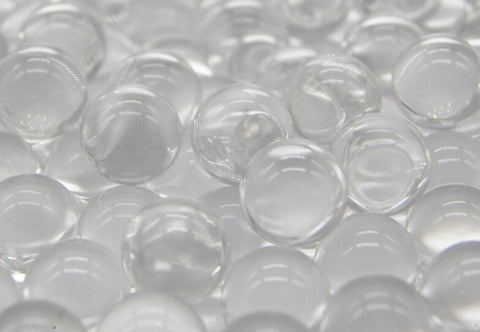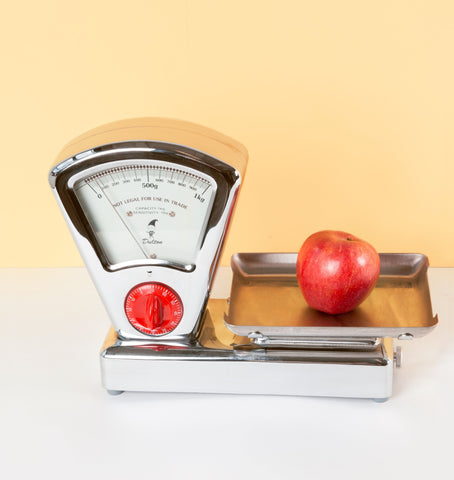The Guide For Choosing The Right Weighted Blanket
A weighted blanket is quite an effective tool that’s part of therapy for a number of issues. People of all ages suffering from insomnia, depression, sensory disorders, post-traumatic stress, and other disorders can benefit from the touch therapy it provides. Unfortunately, understanding just how to select the right weighted blanket can be a daunting task.
But it doesn’t have to be. Just think about your body size and your needs. By taking those into account, you can confidently move forward with finding the weighted blanket that will work best for you.
What Materials Are Weighted Blankets Filled With?

The material used to fill a weighted blanket, thus giving it it’s weighted characteristic, can come in a variety of options. Each has its own set of benefits and drawbacks.
Micro Glass Beads: These beads are so small that they look and feel like beach sand, sugar, or salt. Despite their size, they carry a significant amount of weight. That just means it takes fewer of them to fill a blanket with your designated weight to be effective. These beads also give a weighted blanket a smooth texture. That means no lumpiness or bulkiness when spread or draped over the body. These characteristics make micro glass beads a top choice for those with physical, sensory, or auditory sensitivities.
It’s these advantages that make micro glass beads the only weighing material we use in our weighted blankets. They provide just the right amount of weight for effective, calming therapy, giving you peace of mind.
Plastic Poly Pellets: These small, round, plastic beads have a texture much like pebbles. They don’t encounter toxins or chemicals because they’re usually made from abs virgin plastic. They can make a blanket lumpy and uneven, which can irritate sensitive skin. They also can make a significant amount of noise. But adding stuffing can reduce that noise.
This filling is best used with thicker blanket material, so you don’t notice the bumps and lumps as much. If you’re sensitive to sound or touch, this filling may not be ideal for you.
Steel Shot Beads: Slightly larger than glass beads, steel shot beads are heavier. That means you need even fewer of them to fill a blanket to make it effective. These are ideal for lining thin pockets. Plus, their size makes it more difficult for them to seep through a blanket’s stitching.
The advantage of these beads is that the heat treated steel micro balls are durable and won’t wear out. Their smooth surfaces also prevent them from collecting dirt, making them easy to clean.
However, like plastic pellets, these beads can be noisy. They can also make a blanket lumpy. That means this type of filling isn’t well suited for those with auditory, touch, or sensory sensitivities.
Sand: Like glass beads, sand is extremely small and quiet. However, it’s really not an ideal choice for filling a weighted blanket. It doesn’t spread easily, making for ineffective weight distribution. Plus, it’s difficult to wash and dry. That’s because this semi-organic material expands when it touches water, causing it to bunch the blanket. It also takes a long time to dry and it can easily leak through blanket stitching.
River Stone And Smooth Pebbles: Although river stone and smooth pebbles are inexpensive and easily accessible, it takes some consideration for them to effectively fill a weighted blanket. They come in a variety of sizes and shapes. So choosing small stones that have similar textures and shapes is best. Otherwise, they can make the blanket feel lumpy, uncomfortable, and rough to the touch. Plus, this material can be noisy. These factors make river stone and smooth pebbles less than ideal materials for filling a weighted blanket.
Organic Material: Such organic materials as beans, corn kernels, rice, dry pasta, and barley are readily available. They’re also quite inexpensive. With that in mind, they would seem to make great fillers for weighted blankets, right? Wrong.
These materials are perishable, which means they rot at some point. They can also attract insects and get bacterial growth, fungus, or mold. This makes them very unhygienic. Not only that, but washing blankets containing these fillers causes the material to re-hydrate and expand. That means your blanket has just become a nice side dish – most likely with just one wash.
Although you have plenty of options when it comes to filling a weighted blanket, micro glass beads are the only ones that ensure your blanket stays lump free and can effectively reach its full potential to meet your therapeutic needs.
What Fabrics Are Weighted Blankets Made Of?
A weighted blanket is quilted, so it can evenly distribute the filler weight across your body. You have a wide array of fabric options when it comes to this part of the blanket. But like filler material, each one has its own set of advantages.

MicroPeach: When the fabric in a weighted blanket is silky soft MicroPeach , you get a more breathable product. That means you don’t get as warm when using it. That’s especially good to think about in the summer months, as the rise in the temperature outside won’t stop your need for the blanket. The breathable comfort of this natural material is ideal for people with sensory processing disorders.
Minky: Minky is the fabric often used to make baby blankets. It’s soft and cozy, which makes it a good choice for a weighted blanket. The material adds an extra layer of soothing comfort, which boosts the blanket’s ability to provide therapy. It’s a good choice for those suffering from sensory disorders.
Flannel: This material retains heat better than cotton. So it’s a good fabric choice for a weighted blanket during the colder months. This will help you receive the touch pressure therapy while staying warm when it’s cold outside.
Satin-Cotton: If you benefit from the tactile input of satin, a satin-cotton fabric could be the ideal choice for your weighted blanket. The material’s smooth feel can be soothing. Plus, the blend is still breathable and able to keep you from getting overheated when receiving the touch pressure therapy.
Fleece: This synthetic material is another fabric ideal for the colder months, because it holds in heat. It’s also machine-washable. That makes for easy cleaning. While there are plenty of fabrics to choose from when constructing a weighted blanket, it’s the cozy, year-round comfort of cotton and minky that make our weighted blankets stand out among the rest.
What Size & Weight Are Best For Your Weighted Blanket?
Weighted blankets are made for both adults and children. However, you should never use one on infants, babies & toddlers because the weight could endanger their small bodies.

Weight: Published safety guidelines show that for both children and adults, a weighted blanket should weigh approximately 7% to 12% of the user’s body weight.
For children, it may be tempting to plan ahead since they are always growing. However, it’s best to remember that in the case of a weighted blanket, less is more. Resist the urge to select a blanket you believe they will grow into. Instead, stick to the 7% to 12% guideline. Then be prepared to purchase a new one, as they grow. This will enable your child to get the touch therapy they need without being overwhelmed with the weight of a blanket their body isn’t ready for.
While 7% to 12% is the norm, research shows that adults can actually handle blankets that contain higher percentages of their bodyweight without impeding blood circulation & might find comfort with higher weights. So it’s really the user’s preference when considering the weight needed for their blanket.
Size: The physical size of a weighted blanket depends on how the blanket is used. If a blanket is draped over the shoulders in the daytime, it will naturally be the size of a throw blanket. If this is the case, you should measure the user’s height. The weight will be evenly distributed into quilted pockets throughout the blanket so that when draped, the blanket will provide a calming, therapeutic effect.
A blanket used to cover its user while sleeping through the night can be sized to the bed’s dimensions.
Regardless of whether the weighted blanket is for a child or an adult, or how it’s to be used, always consult with medical experts before you shop for one. Get the expert advice of your occupational therapist, as well as your doctor or other healthcare provider. They can provide valuable feedback and recommendations for your needs.
Once you consider your needs and the options that best fit them, you’ve got all the information necessary to find the weighted blanket that works best for you.
